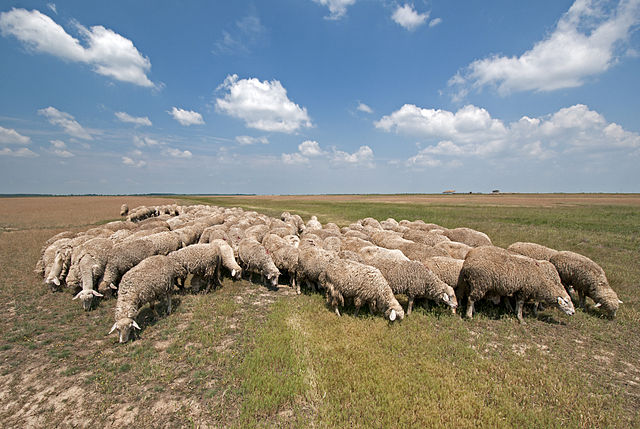Dorper and merino traders in Australia are cashing in on record rates from tight markets with surprisingly big lamb sizes. Their rates topped A$479.50 ($312.63) a head on August 7, 2025, just days after scoring another record.
Australia has had a busy marketing year at home and abroad and expects annual sheep exports to surge by 25% in 2025.
At home, Griffith stockyards in eastern Australia sold 34 second-cross specimen for A$460 ($299.92) a head or $A12 ($7.82)/kg.
A day later, 55 second-cross lambs weighing 92 kg apiece with carcass weights at 43 kg garnered A$480 (US$312.63)/head.
This back-to-back showing began end May, with yards in southern Australia and New South Wales (NSW) repeatedly crashing weekly peaks.
“Spirited bidding” in NSW had a ripple effect in the most recent Griffith sale and helped push prices, reported ABC.
Tight Supplies but Good Market Weights
With market speculators expecting yet a higher record soon, increasingly low supplies due to drought are counterbalancing decent weights.
Meat & Livestock Australia (MLA) reported that the latest weekly sale brought lamb totals to 6,050, down by 950 head.
And yet, most market entries are either heavy or ultra-heavy, with the Dorper breed showing weight range versatility.
Sales of less heavy animals were at least A$6 ($3.91) lower than for heavier equivalents. For instance, 26 kg weights garnered A$335 ($218.42) a head, while 30 kg ones a maximum A$380 ($247.76). Those below 90 kg could get away with over A$400 ($260.80), sometimes averaging A$12.40 ($8.08) per live kg.
Not all is rosy, however, for according to agents, lambs from eastern Griffith are underweight from prolonged pasture dryness.
It is with trepidation therefore that agents are looking to future weeks with only a few heavy-set stockyard offers.
While some are exploiting competition for the available heavies while they last, others are capitalizing in booming merino wethers’ rates.
A most recent wether carcass sale averaging 36 kg garnered A$370 ($241.24)/head, an almost certain record.
Time is therefore now to take advantage of spirited Aussie sheep prices before they plunge back to A$36 ($23.47)/head. The statistics below indeed show how far lamb rates in Australia can scale up and down.
Statistics on Australia Lamb Rates
Live sheep (lamb) prices in Australia normally follow a pattern that recurs based on population and pasture conditions. Regarding population, it hit a decade high of 78.75 million head in 2023, per the Meat & Livestock Australia (MLA). This populous herd plunged prices for 8 months by 62%, year-on-year. After recovering from October 2023 onward, rates gained by 158% henceforth, up to January 2024. Regarding pastures, 2023 also brought dry conditions in Australia, forcing farmers to deflock at throw away prices. Sheep stock market prices in the 2020-25 period averaged A$2.67 ($1.74)/kg vis-á-vis occasional records of above A$7 ($4.56)/kg.
How do lambs sell in Australia during the low season?
Whenever prices fall due to oversupply or low demand, prices usually range from $35 to A$50 ($22.82-32.60) a head. For instance, early March 2023 pinned the price at slightly above A$40 ($26)/head. The mid-month then brought them to below A$40 ($26.08) a head.
What is the upper reach of sheep prices in Australia?
Whenever Aussie sheep’s prices escape single digit figures, they garner double digits, and climb from A$36 ($23.47) to $300 ($195)/head. An example is 2020 and August 2025, two times when prices soared to between A$7 and A$12 ($4.56-7.82)) a kg. In 2020, just as in 2025, drought was the major factor for the record surge in rates.
